
Eisenstadt: The Heartbeat of Austrian History and Culture
Eisenstadt, Austria: A Treasure Trove of Baroque Architecture, Cultural Riches, and Scenic Beauty in the Heart of Burgenland.
Eisenstadt, the capital of Burgenland, Austria, is a city brimming with history, culture, and charm. This picturesque city is nestled at the foot of the Leithagebirge mountains and is renowned for its beautiful Baroque architecture and vibrant cultural scene. One of the key attractions in Eisenstadt is the Esterházy Palace, a stunning example of Baroque architecture and the former residence of the noble Esterházy family. The palace is home to a museum, concert hall, and beautifully landscaped gardens, making it a must-visit for history buffs and art enthusiasts alike. Eisenstadt is also famous for its connection to the composer Joseph Haydn, who spent much of his career in the city. The Haydn House and Haydn Church are dedicated to his life and work, offering a fascinating glimpse into the world of classical music. Visitors can also enjoy the annual Haydn Festival, which celebrates his music with performances and events throughout the city. For those who enjoy outdoor activities, Eisenstadt offers numerous parks and green spaces, including the scenic Schlosspark, where visitors can relax and enjoy the natural beauty of the region. The city's location near Lake Neusiedl also makes it an ideal destination for water sports and nature excursions. Eisenstadt's culinary scene is equally impressive, with a variety of traditional Austrian restaurants and cafes serving delicious local dishes and wines. The city's markets and festivals provide an excellent opportunity to sample regional specialties and experience the local culture firsthand.
Local tips in Eisenstadt
- Visit Esterházy Palace early in the morning to avoid crowds and enjoy a peaceful tour of the gardens.
- Attend the Haydn Festival in September for a unique musical experience celebrating the works of Joseph Haydn.
- Take a leisurely walk in Schlosspark to enjoy the serene environment and picturesque landscape.
- Explore the local markets for authentic Austrian foods and handcrafted souvenirs.
- Consider renting a bike to explore the city and surrounding areas at your own pace.
Eisenstadt: The Heartbeat of Austrian History and Culture
Eisenstadt, the capital of Burgenland, Austria, is a city brimming with history, culture, and charm. This picturesque city is nestled at the foot of the Leithagebirge mountains and is renowned for its beautiful Baroque architecture and vibrant cultural scene. One of the key attractions in Eisenstadt is the Esterházy Palace, a stunning example of Baroque architecture and the former residence of the noble Esterházy family. The palace is home to a museum, concert hall, and beautifully landscaped gardens, making it a must-visit for history buffs and art enthusiasts alike. Eisenstadt is also famous for its connection to the composer Joseph Haydn, who spent much of his career in the city. The Haydn House and Haydn Church are dedicated to his life and work, offering a fascinating glimpse into the world of classical music. Visitors can also enjoy the annual Haydn Festival, which celebrates his music with performances and events throughout the city. For those who enjoy outdoor activities, Eisenstadt offers numerous parks and green spaces, including the scenic Schlosspark, where visitors can relax and enjoy the natural beauty of the region. The city's location near Lake Neusiedl also makes it an ideal destination for water sports and nature excursions. Eisenstadt's culinary scene is equally impressive, with a variety of traditional Austrian restaurants and cafes serving delicious local dishes and wines. The city's markets and festivals provide an excellent opportunity to sample regional specialties and experience the local culture firsthand.
When is the best time to go to Eisenstadt?
Iconic landmarks you can’t miss
Esterházy Palace
Experience the grandeur of Esterházy Palace in Eisenstadt, a historical landmark showcasing baroque beauty, art, and live music in a picturesque setting.

Schlosspark Eisenstadt
Discover the serene landscapes and historical charm of Schlosspark Eisenstadt, a perfect retreat for nature lovers and history enthusiasts alike.

Bergkirche
Discover the Bergkirche in Eisenstadt, a stunning Catholic church celebrating the legacy of Joseph Haydn amidst breathtaking Baroque architecture.

Landesmuseum Burgenland
Explore the cultural treasures of Burgenland at Landesmuseum Burgenland, where history and heritage come alive in Eisenstadt.

Haydn-Haus
Discover the birthplace of Joseph Haydn at Haydn-Haus, a charming historical landmark that celebrates classical music and rich heritage in Eisenstadt.
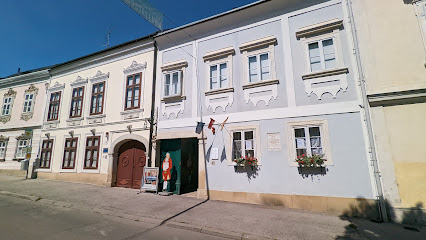
Orangery Palace Park Eisenstadt
Discover the enchanting beauty and rich history of the Orangery Palace Park in Eisenstadt, a perfect blend of nature and culture for every traveler.
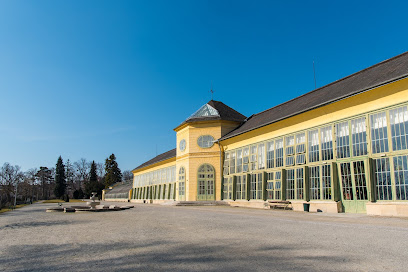
Leopoldinentempel
Explore the historical charm of Leopoldinentempel in Eisenstadt, a stunning landmark that showcases Austria's rich cultural heritage.

St. Martin Cathedral
Discover the architectural beauty and spiritual tranquility of St. Martin Cathedral, a must-visit landmark in the heart of Eisenstadt.

Österreichisches Jüdisches Museum
Explore the profound Jewish heritage at Österreichisches Jüdisches Museum in Eisenstadt, a captivating destination for history and culture enthusiasts.

Buchkogelwarte, Eisenstadt
Explore the stunning vistas at Buchkogelwarte, an observation deck in Eisenstadt offering breathtaking panoramic views of Austria's natural beauty.

Obelisk im Schlosspark Eisenstadt
Explore the stunning Obelisk in Eisenstadt's Schlosspark, a beautiful blend of history, culture, and nature in Austria.

Maschinenteich Schlosspark Eisenstadt
Discover the beauty of Maschinenteich Schlosspark in Eisenstadt, where nature meets history in a serene park with a picturesque pond.
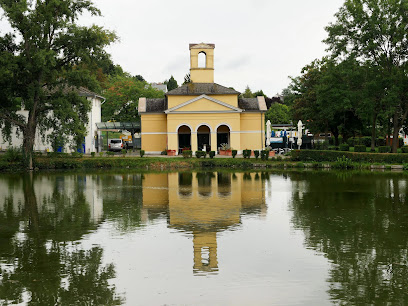
Diözesanmuseum Eisenstadt
Explore the Diözesanmuseum Eisenstadt, where religious art and rich cultural heritage come to life in the heart of Burgenland.

Eisenstadt Jewish Cemetery
Explore the Eisenstadt Jewish Cemetery, a serene homage to the rich Jewish heritage and history of Austria, perfect for reflection and remembrance.

Gedenkkreuz von 1660
Explore the Gedenkkreuz von 1660, a significant historical landmark in Eisenstadt, Austria, reflecting the rich cultural heritage of the region.

Unmissable attractions to see
Schönbrunn Palace
Experience the opulence and history of Schönbrunn Palace, Vienna's grand baroque treasure surrounded by stunning gardens.

Prater
Experience the thrill of rides and the serenity of nature at Prater, Vienna's iconic amusement park, blending excitement with picturesque landscapes.
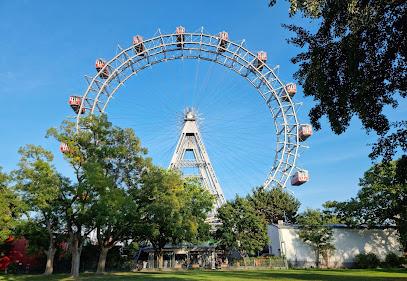
Belvedere Palace
Explore the stunning Belvedere Palace in Vienna, a baroque masterpiece with impressive art collections and breathtaking gardens that capture Austria's rich history.

Schönbrunn Palace Park
Explore the breathtaking Schönbrunn Palace Park in Vienna, a UNESCO World Heritage site featuring stunning gardens, historical architecture, and cultural treasures.
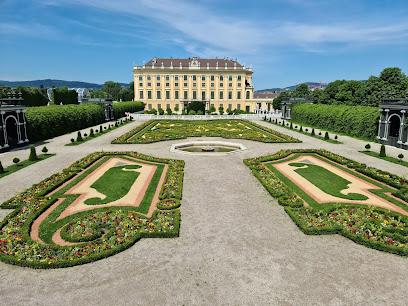
Schönbrunn Zoo
Explore Schönbrunn Zoo in Vienna, home to over 700 animal species in a stunning historical setting with lush gardens and engaging exhibits.

Vienna State Opera
Experience the epitome of culture at Vienna State Opera, where world-class performances come alive in an architectural masterpiece.

Hofburg
Discover the imperial heritage of Vienna at Hofburg Palace, a historical landmark rich in culture and grandeur, perfect for every traveler.

Viennese Giant Ferris Wheel
Discover the breathtaking views from the iconic Viennese Giant Ferris Wheel, a perfect blend of history and stunning cityscapes in Vienna.

Museum of Natural History Vienna
Explore the Museum of Natural History Vienna: A captivating journey through time showcasing the planet's natural wonders and treasures.

MuseumsQuartier Wien
Explore the artistic heart of Vienna at MuseumsQuartier Wien, a cultural center that combines history, modern art, and vibrant social spaces.

Albertina
Explore the Albertina in Vienna, a premier art museum featuring masterpieces, stunning architecture, and serene gardens, perfect for art lovers and tourists.

Kunsthistorisches Museum Wien
Explore the majestic Kunsthistorisches Museum Wien, a treasure trove of art and history in the heart of Vienna, showcasing masterpieces from across the ages.
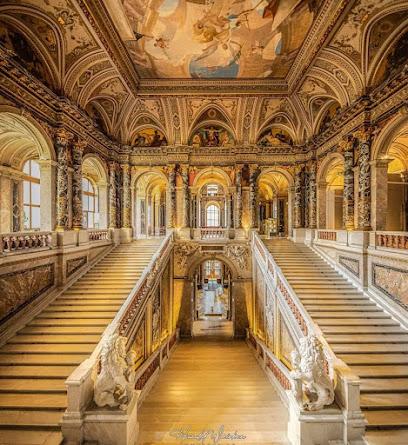
City Park
Explore Vienna's City Park, a lush urban oasis featuring stunning gardens, historical monuments, and vibrant cultural events in the heart of the city.

St. Charles's Church
Discover the architectural beauty and historical significance of St. Charles's Church in Vienna, an unmissable baroque gem in the heart of the city.

Hundertwasser House
Explore the Hundertwasser House in Vienna, a vibrant architectural masterpiece blending color, nature, and creativity for an unforgettable experience.

Essential places to dine
McDonald's
Experience the beloved taste of McDonald's in Eisenstadt - where quick meals meet familiar flavors in a welcoming atmosphere.

Haydnbräu
Experience authentic Austrian cuisine at Haydnbräu in Eisenstadt - where tradition meets flavor in every dish.

Die Alm by Rabina
Discover Die Alm by Rabina in Eisenstadt: A culinary experience blending tradition with modernity amidst charming surroundings.
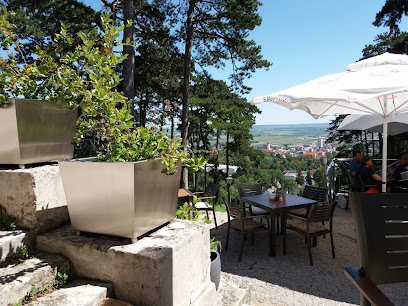
Burger King
Experience delicious American fast food at Burger King in Eisenstadt - perfect for quick meals after exploring this charming city.

The Roots
Experience Eisenstadt's culinary delights at The Roots - where hamburgers meet ice cream in a cozy atmosphere.

Baba's Diner - American Burger Eisenstadt
Savor authentic American burgers at Baba's Diner in Eisenstadt - where delicious flavors meet cozy dining.

Ella Italia
Discover authentic Italian cuisine and delightful homemade ice creams at Ella Italia in Eisenstadt – A perfect stop for food lovers!

Eisenstadt Henrici
Experience exquisite dining at Eisenstadt Henrici - where traditional Austrian flavors meet modern culinary artistry.
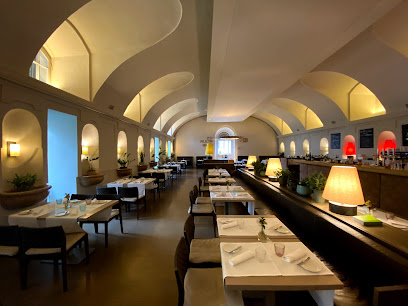
Mangoo Restaurant - Bar
Discover the flavors of Eisenstadt at Mangoo Restaurant - Bar, where culinary excellence meets vibrant nightlife in a welcoming atmosphere.

Altes Backhaus
Discover the culinary delights of Altes Backhaus in Eisenstadt, where tradition meets taste in every dish served.

Gasthof OHR
Discover Gasthof OHR in Eisenstadt: Where Traditional Austrian Cuisine Meets Modern Comfort in a Charming Setting.

Restaurant Ruckendorfer
Discover the authentic flavors of Austria at Restaurant Ruckendorfer in Eisenstadt – where every meal tells a story.

Big Benji's (EZE)
Experience authentic Austrian cuisine at Big Benji's in Eisenstadt—where every meal is a celebration of flavor and hospitality.

Hofpassage Weinschwein
Experience authentic Austrian flavors at Hofpassage Weinschwein in Eisenstadt - a culinary gem for food lovers.

Oscar's
Experience delightful breakfasts at Oscar's Bistro in Eisenstadt, where local flavors meet a cozy atmosphere perfect for every traveler.

Markets, malls and hidden boutiques
EZE Einkaufszentrum Eisenstadt
Discover the vibrant EZE Einkaufszentrum in Eisenstadt, Austria - your go-to destination for shopping, dining, and family fun in a lively atmosphere.

STOP SHOP
Explore STOP SHOP in Eisenstadt - A vibrant shopping mall with diverse shops and dining options, perfect for an enjoyable day out.
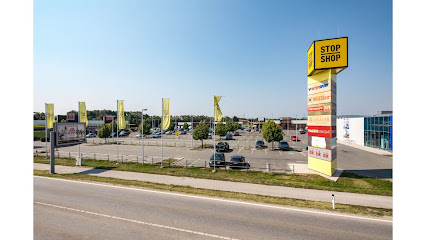
Action Eisenstadt
Explore Action Eisenstadt, your go-to destination for unique gifts, home goods, and DIY supplies in the heart of Austria.

ZGONC Specialists - Shop Eisenstadt
Explore ZGONC Specialists in Eisenstadt for a wide range of tools, building materials, and garden supplies, perfect for every DIY project.

Selection Vinothek Burgenland GmbH
Discover the finest wines and gourmet delights at Selection Vinothek Burgenland, your gateway to Burgenland's rich culinary heritage.

LIBRO
Explore LIBRO in Eisenstadt for unique gifts and local treasures that capture the spirit of Austria, from stationery to toys and more.

TEDi Warenhandels GmbH
Explore TEDi Warenhandels GmbH in Eisenstadt for affordable home goods and unique souvenirs that capture the essence of Austrian culture.

hopfen & soehne
Discover the perfect blend of local craft beers, specialty coffees, and unique gifts at Hopfen & Söhne in Eisenstadt, Austria.

Monroe
Explore Monroe in Eisenstadt: Your ultimate destination for musical instruments and a hub for local music enthusiasts.
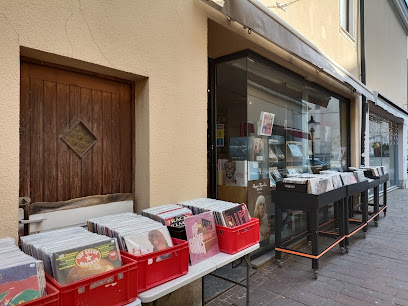
Depot
Explore Depot in Eisenstadt for unique gifts and stylish home decor, perfect for tourists seeking memorable souvenirs and local flair.

MediaMarkt Eisenstadt
Explore a vast selection of electronics and appliances at MediaMarkt Eisenstadt, your ultimate tech destination in Austria.

KiK Eisenstadt StopShop
Explore a diverse range of fashionable clothing at KiK Eisenstadt StopShop – where style meets affordability in the heart of Austria.

Markthalle Kulinarium Burgenland
Experience the authentic tastes of Burgenland at Markthalle Kulinarium, the premier natural goods store in Eisenstadt, showcasing local flavors and artisanal products.

E-Zigaretten Shop - Dampfteufel
Explore a vast selection of vaporizers and e-liquids at Dampfteufel, Eisenstadt's premier destination for vaping enthusiasts.

zwei.null - kreative vielfalt
Explore the artistic charm of zwei.null in Eisenstadt, where unique gifts and personalized handicrafts await every traveler.

Essential bars & hidden hideouts
The Roots
Experience the vibrant culinary scene at The Roots in Eisenstadt, where delicious food and a lively atmosphere await every visitor.

Mangoo Restaurant - Bar
Discover the lively Mangoo Restaurant - Bar in Eisenstadt, where delicious food meets vibrant nightlife in a welcoming atmosphere.

Zwillingsstüberl
Experience the best of Austrian wines and local flavors at Zwillingsstüberl in Eisenstadt, a must-visit for every wine enthusiast.
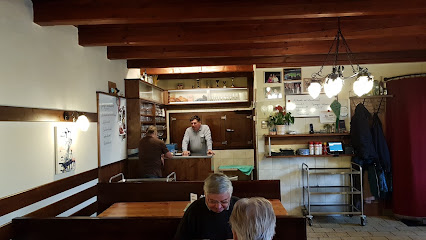
Cebu Cafe-Bar
Discover the vibrant Cebu Cafe-Bar in Eisenstadt, where creative cocktails meet a cozy atmosphere for an unforgettable night out.

hopfen & soehne
Discover the delight of craft beers, specialty coffees, and unique gifts at Hopfen & Soehne in Eisenstadt, a perfect blend for every visitor.

Schlosscafé
Experience the charm of Schlosscafé in Eisenstadt, where local flavors meet breathtaking views in a cozy atmosphere.
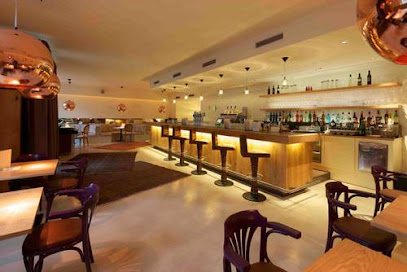
Skyfall Beach Lounge & Bar
Experience the perfect blend of relaxation and vibrant socializing at Skyfall Beach Lounge & Bar in Eisenstadt.

St. Martin's Arms
Discover the culinary charm of St. Martin's Arms in Eisenstadt, where Austrian and British flavors intertwine in a delightful setting.

The G-Club
Experience the vibrant nightlife at The G-Club in Eisenstadt, where creative cocktails and a lively atmosphere await every visitor.

Schluckspecht - Bier & Weinstube
Experience the essence of Eisenstadt at Schluckspecht, where exceptional beers and wines meet a warm, inviting atmosphere.

Cafe Mikschi
Discover the charm of Cafe Mikschi in Eisenstadt, where delicious Austrian cuisine meets a cozy atmosphere perfect for relaxation.

The Top - Drinks & Bar Food
Experience stunning views and delightful drinks at The Top, the premier rooftop bar in Eisenstadt, where every moment is a celebration.

Aspirin
Discover Aspirin Bar in Eisenstadt: the perfect blend of café ambiance and wine bar elegance for an unforgettable evening.

Sportcafe Bar Eisenstadt
Experience the vibrant nightlife of Eisenstadt at Sportcafe Bar, a social hub for sports lovers and night owls alike.

Cafe Im Hof
Experience the charm of Eisenstadt at Café Im Hof, where delightful pastries and a cozy atmosphere await every traveler.

Local Phrases
-
- HelloServus
[sair-voos] - GoodbyeAuf Wiedersehen
[ouf vee-der-zay-en] - YesJa
[yah] - NoNein
[nine] - Please/You're welcomeBitte
[bit-te] - Thank youDanke
[dahn-keh] - Excuse me/SorryEntschuldigung
[ent-shool-dee-goong] - How are you?Wie geht es dir?
[vee gayt es deer] - Fine. And you?Gut. Und dir?
[goot oont deer] - Do you speak English?Sprechen Sie Englisch?
[shpre-khen zee eng-leesh] - I don't understandIch verstehe nicht
[eekh fer-shtay-e nikt]
- HelloServus
-
- I'd like to see the menu, pleaseIch hätte gerne die Speisekarte, bitte
[eekh het-eh gair-ne dee shpy-ze-kar-te, bit-te] - I don't eat meatIch esse kein Fleisch
[eekh es-se kine fleysh] - Cheers!Prost!
[prohst] - I would like to pay, pleaseIch möchte bezahlen, bitte
[eekh merkh-te beh-zah-len, bit-te]
- I'd like to see the menu, pleaseIch hätte gerne die Speisekarte, bitte
-
- Help!Hilfe!
[heel-feh] - Go away!Geh weg!
[gey vegg] - Call the Police!Rufen Sie die Polizei!
[roo-fen zee dee po-lee-tsay] - Call a doctor!Rufen Sie einen Arzt!
[roo-fen zee i-nen ahrts] - I'm lostIch bin verloren
[eekh been fer-loh-ren] - I'm illIch bin krank
[eekh been krank]
- Help!Hilfe!
-
- I'd like to buy...Ich möchte kaufen...
[eekh merkh-te kou-fen] - I'm just lookingIch schaue nur
[eekh show-eh noor] - How much is it?Wie viel kostet das?
[vee feel kohs-tet dahs] - That's too expensiveDas ist zu teuer
[dahs ist tsoo toy-er] - Can you lower the price?Können Sie den Preis senken?
[ker-nen zee den preys zehn-ken]
- I'd like to buy...Ich möchte kaufen...
-
- What time is it?Wie spät ist es?
[vee shpet ist es] - It's one o'clockEs ist ein Uhr
[es ist iyn oor] - Half past (10)Halb elf
[halb elf] - MorningMorgen
[mohr-gen] - AfternoonNachmittag
[nahkh-mit-tahk] - EveningAbend
[ah-bent] - YesterdayGestern
[gey-shtern] - TodayHeute
[hoy-te] - TomorrowMorgen
[mohr-gen] - 1Eins
[eyns] - 2Zwei
[tsvay] - 3Drei
[dry] - 4Vier
[feer] - 5Fünf
[foonf] - 6Sechs
[zeks] - 7Sieben
[zee-ben] - 8Acht
[ahkt] - 9Neun
[noyn] - 10Zehn
[tsayn]
- What time is it?Wie spät ist es?
-
- Where's a/the...?Wo ist ein/der...?
[vo ist iyn/dehr] - What's the address?Was ist die Adresse?
[vas ist dee ah-dre-seh] - Can you show me (on the map)?Können Sie mir zeigen (auf der Karte)?
[ker-nen zee meer tsai-gen (ouf dehr kar-teh)] - When's the next (bus)?Wann kommt der nächste (Bus)?
[vann komt dehr nakh-steh (boos)] - A ticket (to ....)Eine Fahrkarte (nach ....)
[i-ne fahr-kar-te (nahkh ....)]
- Where's a/the...?Wo ist ein/der...?
History of Eisenstadt
-
Eisenstadt, located at the foot of the Leitha Mountains, has a rich history dating back to the early Middle Ages. The first documented mention of Eisenstadt appears in a 1264 record, although archaeological findings suggest that the area was settled much earlier. Over time, it developed from a small settlement into a significant market town.
-
The Esterházy family, one of the most prominent noble families in Hungary, played a crucial role in the history of Eisenstadt. In 1622, Nikolaus Esterházy acquired the town, and it became the administrative center of their vast estates. The family’s influence is most evident in the grandiose Esterházy Palace, which transformed Eisenstadt into an important cultural hub.
-
Eisenstadt is synonymous with the name Joseph Haydn, the celebrated composer who spent over four decades in the service of the Esterházy family. Haydn's association with the town began in 1761, and during his tenure, he composed numerous works that are still celebrated today. The annual Haydn Festival and the Haydn House museum are testaments to his enduring legacy in Eisenstadt.
-
Eisenstadt is home to several significant religious and cultural landmarks. The Bergkirche, or 'Haydn Church,' with its striking hilltop location, contains Haydn's mausoleum. The Franciscan Church, dating back to the 14th century, and the Jewish Museum, which chronicles the history of the Jewish community in Burgenland, are also noteworthy.
-
In the 20th century, Eisenstadt became the capital of the newly established federal state of Burgenland in 1925. Post-World War II, the town saw significant growth and modernization. Today, Eisenstadt is a vibrant city that blends its rich historical heritage with contemporary cultural offerings, making it a fascinating destination for visitors.
Eisenstadt Essentials
-
Eisenstadt is located in the Burgenland region of Austria, approximately 60 kilometers south of Vienna. The nearest major airport is Vienna International Airport (VIE). From the airport, you can take a train or a bus to Eisenstadt. The journey by train typically takes around 1.5 hours, with a transfer at Vienna's main train station (Wien Hauptbahnhof). Alternatively, you can rent a car at the airport and drive to Eisenstadt, which takes approximately 45 minutes.
-
Eisenstadt is compact and many attractions are within walking distance. The city also has a reliable public bus system. Taxis are available, and car rentals are an option if you plan to explore the surrounding areas. For those interested in cycling, bike rentals are available and the city is bike-friendly with several dedicated lanes.
-
The official currency in Austria is the Euro (EUR). Credit and debit cards are widely accepted in most hotels, restaurants, and shops. However, it is advisable to carry some cash for small purchases or in more rural areas. ATMs are readily available throughout Eisenstadt.
-
Eisenstadt is generally a very safe city for tourists. Standard precautions should be taken, such as avoiding poorly lit areas at night and keeping an eye on your belongings in crowded places. There are no specific neighborhoods with high crime rates targeting tourists.
-
In case of emergency, dial 112 for immediate assistance. The local police station and medical facilities are available in Eisenstadt. It is recommended to have travel insurance that covers medical emergencies. For minor health issues, there are several pharmacies in the city where you can purchase over-the-counter medications.
-
Fashion: Do dress comfortably but modestly, especially when visiting religious sites. Avoid overly casual attire in upscale restaurants. Religion: Do respect local customs, particularly in churches. Avoid loud conversations and dress modestly. Public Transport: Do validate your ticket before boarding. Don't eat or drink on public transport. Greetings: Do greet people with a firm handshake. A polite 'Grüß Gott' (God bless) is a common greeting. Eating & Drinking: Do try local dishes and wines. Don't leave a tip out of the bill; it's customary to round up the amount or leave a small tip in cash.
-
To experience Eisenstadt like a local, visit the local markets and buy fresh produce and traditional goods. Engage with locals; they are generally friendly and willing to share stories about their city. Don't miss visiting the Esterházy Palace and taking a stroll through its beautiful gardens. For a unique experience, attend a classical music concert, as Eisenstadt has a rich musical heritage tied to composer Joseph Haydn.
Trending Landmark in Eisenstadt
-
Esterházy Palace
-
Schlosspark Eisenstadt
-
Bergkirche
-
Landesmuseum Burgenland
-
Haydn-Haus
-
Orangery Palace Park Eisenstadt
-
Leopoldinentempel
-
St. Martin Cathedral
-
Österreichisches Jüdisches Museum
-
Buchkogelwarte, Eisenstadt
-
Obelisk im Schlosspark Eisenstadt
-
Maschinenteich Schlosspark Eisenstadt
-
Diözesanmuseum Eisenstadt
-
Eisenstadt Jewish Cemetery
-
Gedenkkreuz von 1660
Nearby Cities to Eisenstadt
-
Things To Do in Sopron
-
Things To Do in Vienna
-
Things To Do in Bratislava
-
Things To Do in Szombathely
-
Things To Do in Gyor
-
Things To Do in Trnava
-
Things To Do in Zalaegerszeg
-
Things To Do in Graz
-
Things To Do in Keszthely
-
Things To Do in Veszprem
-
Things To Do in Tatabanya
-
Things To Do in Brno
-
Things To Do in Maribor
-
Things To Do in Szekesfehervar
-
Things To Do in Trenčín













